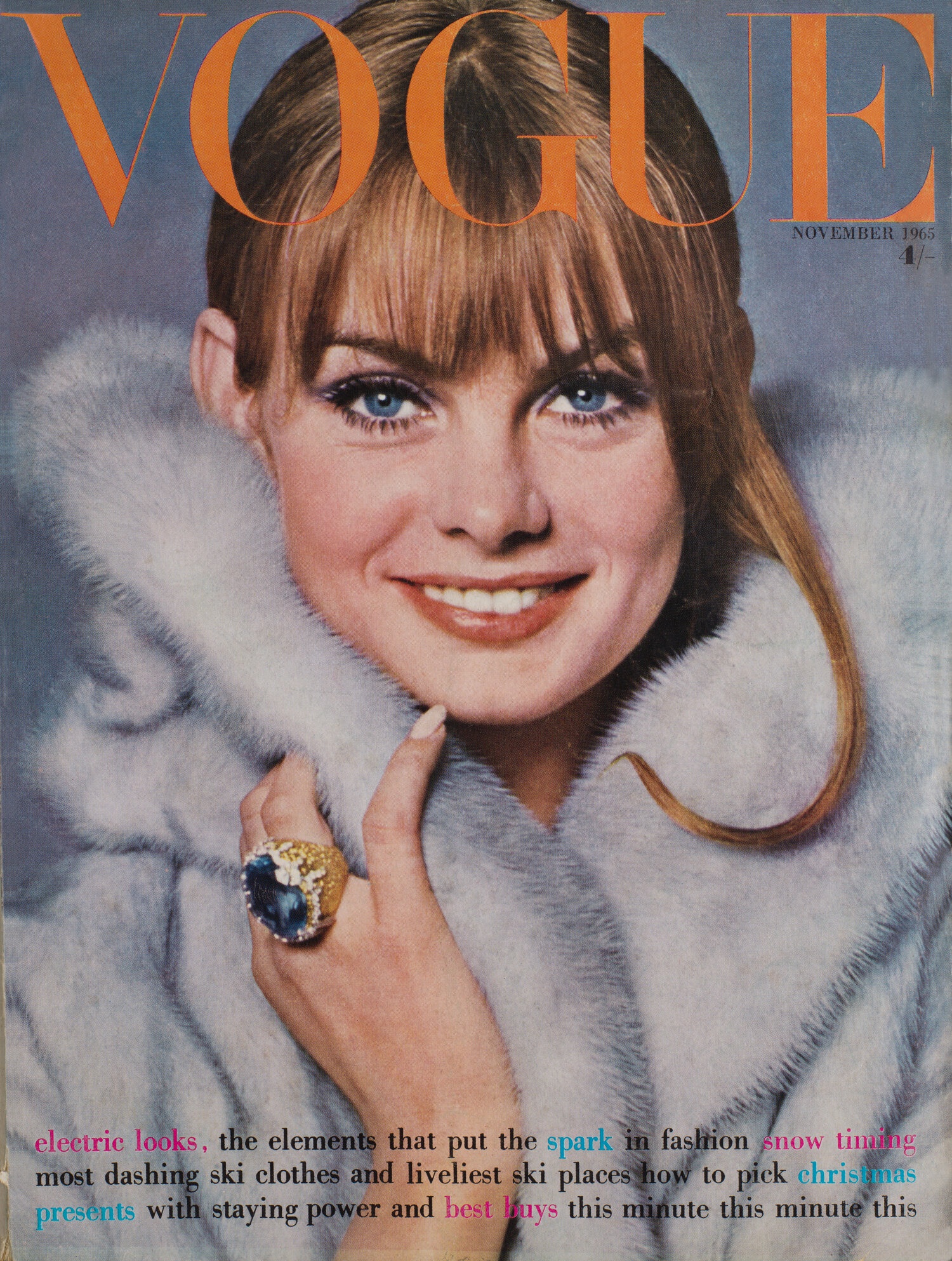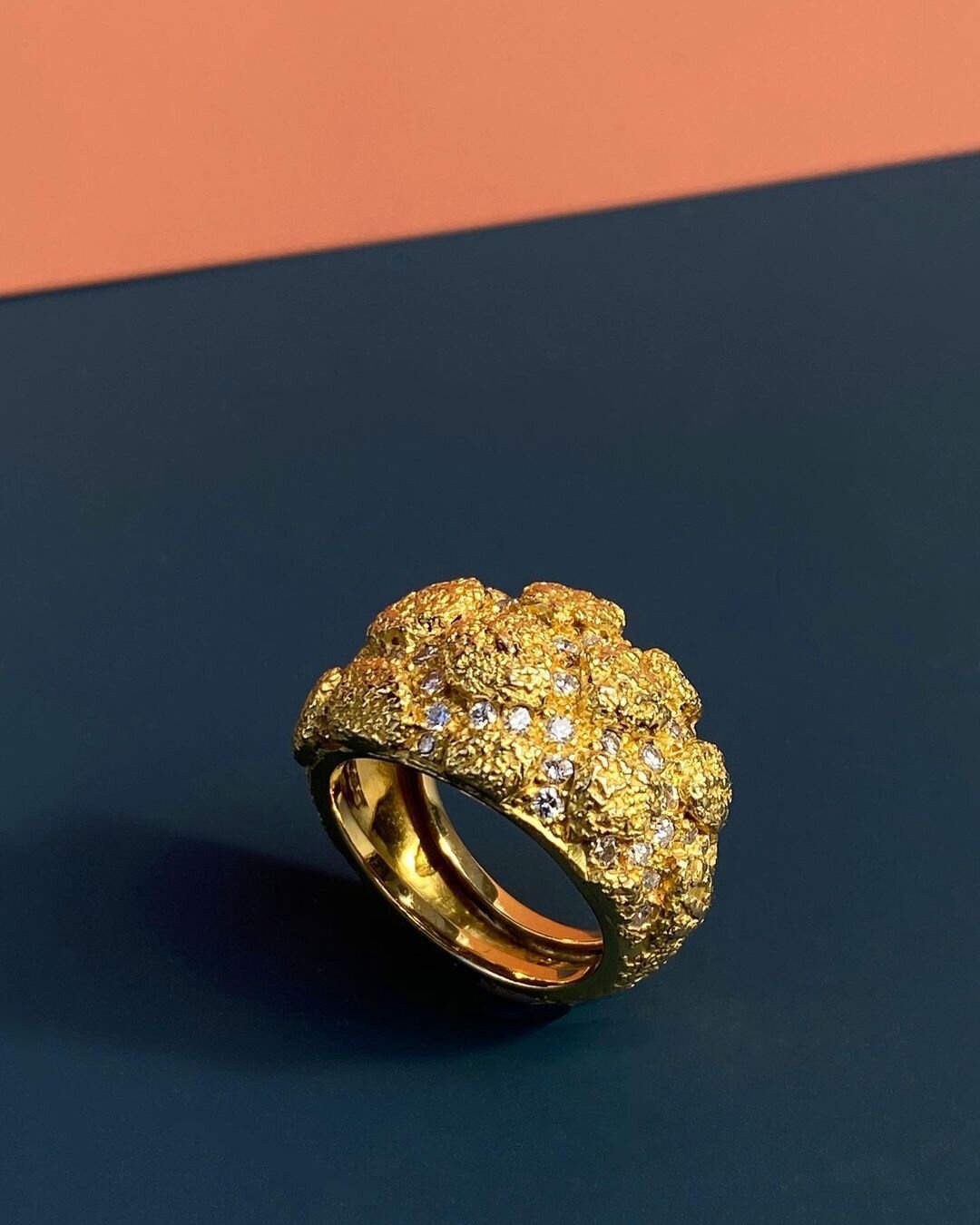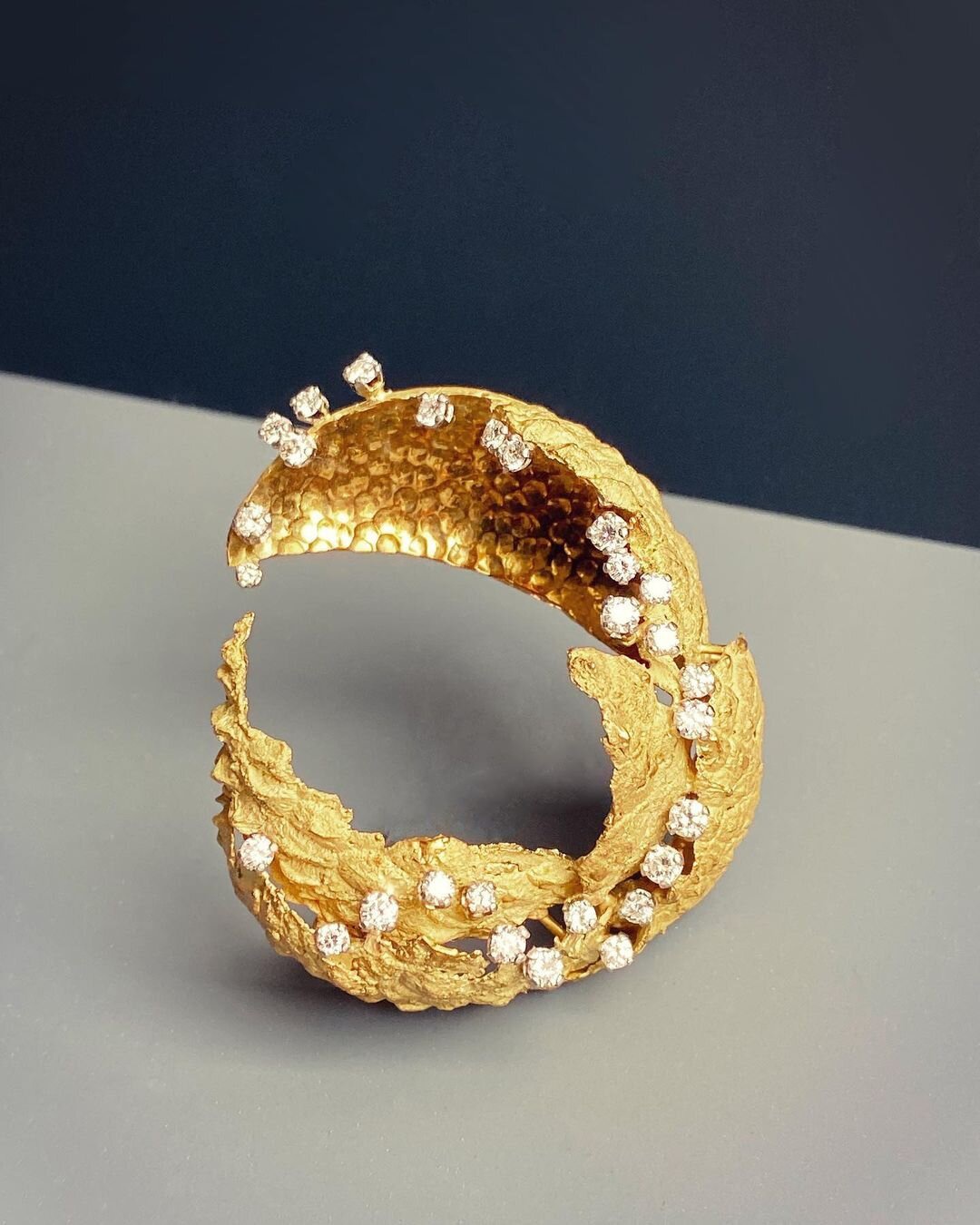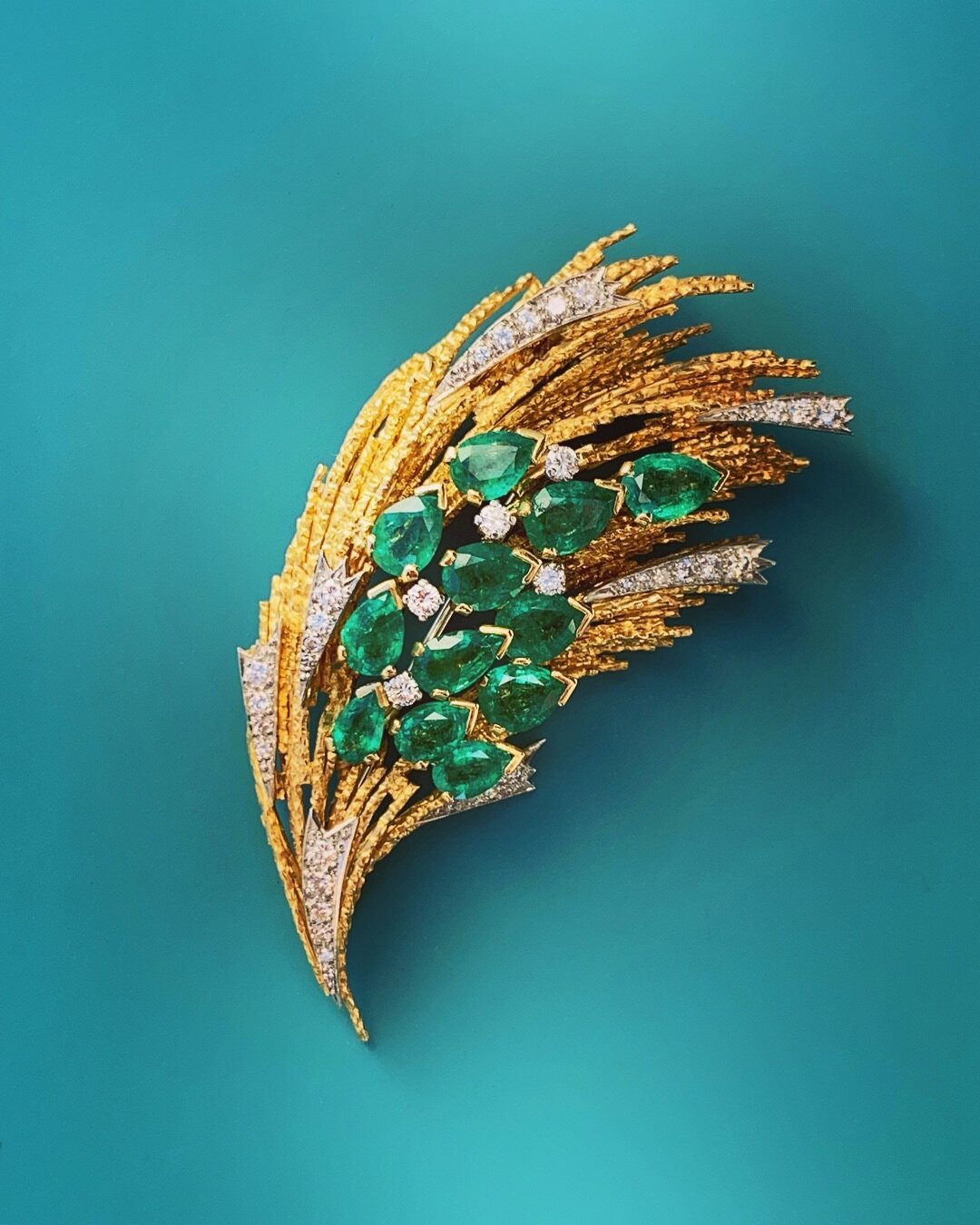The 1960s
Our second issue of ‘ Behind The Jewel’ features pieces for sale from the 1960s. Andrew Grima’s career as a jewellery designer began in 1946 and continued into the new millennium, but the 1960s was the decade when everything changed. The opening salvo in this breakthrough decade began in 1961 with The International Exhibition of Modern Jewellery (1890 - 1961) held in London at the Goldsmiths’ Hall. Grima’s H.J. Company featured prominently in the exhibition and he was subsequently inspired to ditch the past and commit to a new design philosophy declaring that the exhibition “set my mind searching for new shapes and forms”.

Jean Shrimpton photographed by David Bailey for the cover of Vogue modelling a large Grima aquamarine ring - November 1965
In doing so he was instrumental in creating a new design vocabulary which rippled across the globe and changed the way people perceived jewellery for at least the next 20 years.
Success soon followed:
-
In 1963 Andrew Grima met and began a lifelong friendship with Lord Snowdon which lead to patronage from Princess Margaret, Queen Elizabeth and other members of the Royal family.
-
In 1964 he won 3 De Beers Diamonds International Awards (the ‘Oscars' of the jewellery world).
-
In 1965, Jean Shrimpton (photographed by David Bailey) appeared on the cover of Vogue wearing a large aquamarine Grima ring.
-
In 1966 Grima was awarded the Duke of Edinburgh's Prize for Elegant Design. The Duke gave the Queen a carved ruby and diamond brooch from the winning collection.
-
In 1967 he won 2 Diamonds International Awards and designed a beautiful gold and diamond brooch for Princess Margaret (cast from a piece of lichen she foraged at Balmoral).
-
In 1968 Grima won his eleventh and final De Beers Diamonds International Award - more than any other jeweller before or since. He was asked to sit on the judging panel which rendered him ineligible for competing further.
-
In 1969 Omega commissioned Andrew Grima to design a collection of watches. About Time was arguably the most important and certainly one of the most dazzling and original watch collections ever made.
Grima designs from the 1960s onwards are progressive, abstract and asymmetrical but without sacrificing elegance or wearability. They are typically either organic, deriving inspiration from raw nature or else miniature abstracted sculptures. Like any work of modern art worthy of contemplation, they challenge the observer to recalibrate taste and perception.

Reed Brooch, 1964
This yellow gold and diamond brooch uses gold wire to mimic reeds rippling in a fast flowing river. The diamonds suggest sunlight reflecting on the surface of the water. It is typical of Andrew Grima’s organic, biomorphic design style inspired by natural forms.
SOLD

“Crocodile” Ring, 1965
This gold and diamond ring was part of the collection awarded the Duke of Edinburgh’s Prize for Elegant Design in 1966. We are aware of only three such rings having been made, each subtly different and therefore unique: one resides in the world renowned Goldsmiths’ Hall Modern Jewellery collection; another forms part of an important Grima collection in Germany; the third (shown above) is available to purchase from our collection.
SOLD

Garrard Brooch, 1965
This brooch, a miniature abstract sculpture made of textured yellow gold bricks set with diamonds was designed by Andrew Grima in 1965 and sold to The House of Garrard, royal jewellers since 1735. Had Andrew Grima been a Modern British sculptor instead of a jewellery designer this would surely have been a museum quality work of art.

Lychee Brooch, 1965
From his earliest days as a jewellery designer, Andrew Grima was known for casting organic materials as jewellery using an adaptation of the ‘lost wax’ method whereby leaves, plants and tree bark are encased in plaster of Paris and heated to leave a negative space to be injected with molten gold via a centrifuge. This intriguing gold and diamond brooch is the only example we have encountered cast from the skin of a lychee.
SOLD

Emerald Brooch, 1967
This brooch is one of the best examples of textured gold wire work we have ever come across. Set with 12 pear shaped emeralds, brilliant-cut diamonds set in collets and pavé, it is a wonderfully crafted combination of both intrinsic and artistic value.
SOLD

Blue Topaz Ring, 1968
This sculptural, almost architectural masterpiece features a large natural blue topaz mounted in yellow gold rods highlighted by brilliant-cut diamonds. Andrew Grima was a great admirer of the architects Lúcio Costa, Oscar Niemeyer and Roberto Burle Marx who between 1955 and 1960 created the city of Brasilia from scratch. This ring references their modernist style.
SOLD

Add a comment